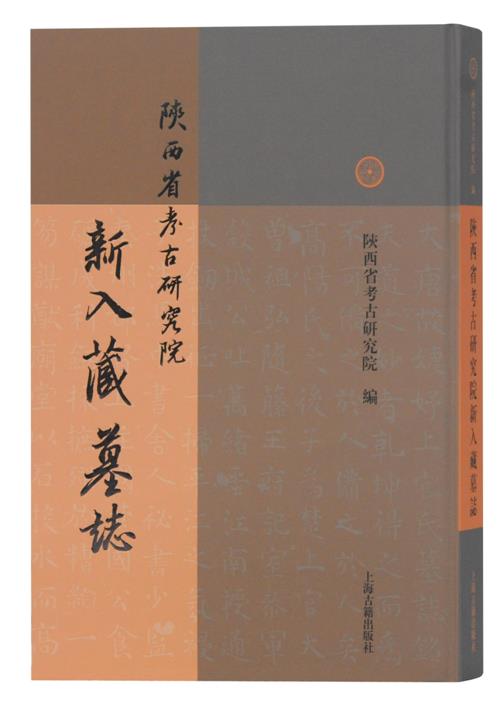Studying epitaphs from an archaeological perspective

New Collected Epitaphs of Shaanxi Provincial Institute of Archaeology
Founded in 1958, the Shaanxi Provincial Institute of Archaeology is the largest and the strongest local archaeological research institution in China. New Collected Epitaphs of Shaanxi Provincial Institute of Archaeology is a large collection of epitaph literature, with 228 different kinds of stone epitaphs from the Former Qin (350–394) of the Eastern Jin Dynasty (317–420) to the Yuan Dynasty (1271–1368), of which there are 359 total epitaphs. Among them, there are 14 kinds of epitaphs from before the Tang Dynasty (618–907), 131 from in the Tang Dynasty, and 83 from after the Five Dynasties (907–960).
Different from inscriptions on tablets erected in front of tombs, the epitaphs in this book are inscriptions on memorial tablets within tombs that record the deeds of the deceased. The epitaphs collected in this book are reliable research material, each unearthed through a special archaeological excavation project by the Shaanxi Provincial Institute of Archaeology.
Most epitaphs collected in this book were unearthed in Xi’an and Xianyang from the 1980s to the turn of this century. The book collects famous Tang epitaphs, including from the famous female poet Shangguan Wan’er and the famous Prime Minister Han Xiu. According to the preface written by Ge Chengyong, a famous expert of Tang history, nearly 80% of the Tang epitaphs collected in the book are being published for the first time.
It is worth mentioning that the book collects together epitaphs of several famous families from various dynasties. There have been unearthed 10 kinds of epitaphs of the family of the famous Tang general Ma Lin. Considering that eight kinds have been collected in another piece of archeological literature, this book collects two kinds. Unearthed epitaphs of the family of the Tang eunuch Liang Shouqian amount to six kinds so far, with three kinds contained within this book. Furthermore, the book collects together 30 kinds of epitaphs of the Song Dynasty (960–1279), among which 28 kinds are epitaphs of the Lu family, a famous family in the Song Dynasty represented by Lu Dalin (1044–1091), who promoted the development of Confucianism and is acknowledged as the founder of Chinese archaeology. Involving three generations with a time span of around half a century, the Lu epitaphs are an important archeological discovery of the Song Dynasty.
The book also contains rough epitaphs found within small tombs, reflecting the decline of earlier flourishing families and the hardship of people after the Middle Tang Dynasty (766–835). The research value of each unearthed epitaph is generally judged according to its tomb owner, author of inscription, engraver and other relevant elements. From a holistic point of view, epitaphs within large and small tombs are precious and non-renewable resources of research.
